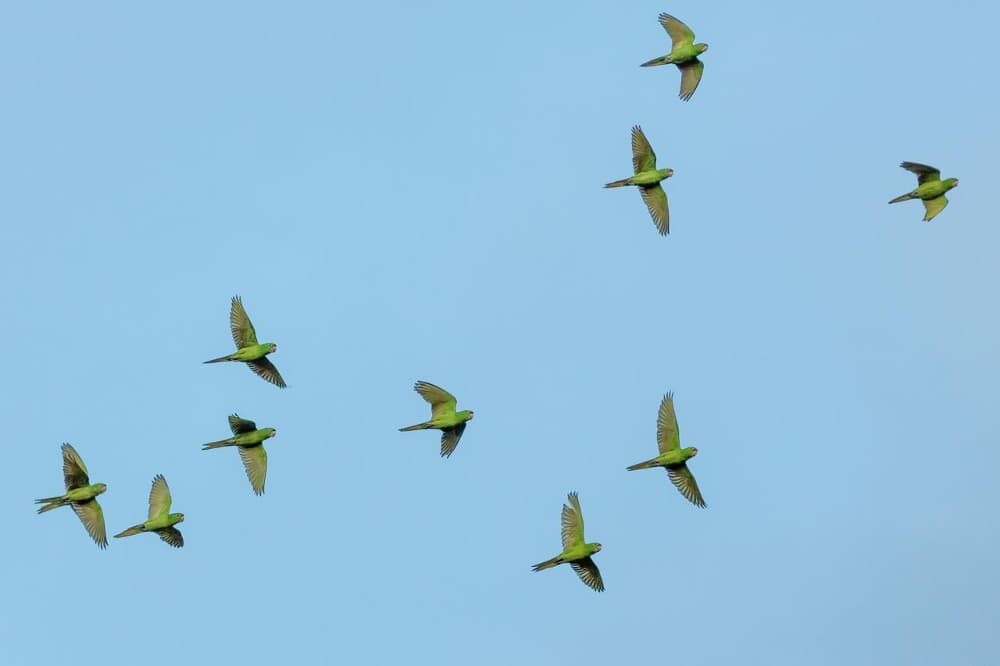Mexico is a country located in the southern part of North America. It borders the United States to the north, the Pacific Ocean to the south and west, Guatemala, Belize, and the Caribbean Sea to the southeast, and the Gulf of Mexico to the east. With a population of over 126 million people, it is the tenth most populous country in the world and the third most populous in Latin America.
Mexico is known for its rich cultural heritage and diverse geography. In terms of biodiversity, Mexico is one of the world’s megadiverse countries. Its variety of ecosystems, ranging from deserts and forests to tropical jungles and mountainous systems, hosts a vast number of animal and plant species, many of which are endemic.
Today, we will talk about all those species that, if you are lucky, you might observe during our environmental conservation program in Yucatán, or during your travels and excursions in your free time after your volunteering experience.
AXOLOTL
The axolotl is a species of salamander found exclusively in the lakes around Mexico City. It is known for its unique appearance and incredible regenerative abilities.
Unlike many other salamanders, the axolotl retains larval characteristics throughout its adult life, such as external gills and a tail fin. This condition is known as neoteny, meaning axolotls maintain a juvenile and aquatic appearance throughout their lives.
Axolotls are famous for their ability to completely regenerate body parts, including limbs, heart, brain, and spinal cord. This ability has made the axolotl the subject of numerous scientific studies, especially in the field of regenerative biology. They have an elongated body with short limbs and thin fingers. Their head is wide and flattened, with small, lidless eyes. They can vary in color but are commonly found in dark tones like brown or black. In captivity, albino or leucistic varieties, which are white or pink, can be found.
The axolotl is critically endangered in its natural habitat due to water pollution, habitat loss, and the introduction of invasive species. However, it is common in the pet trade and research laboratories.
In Mexican culture, the axolotl is associated with the god Xólotl, who transformed into different beings to avoid his fate. It is also an important cultural symbol, representing resilience and adaptability.

OCELOT
The ocelot (Leopardus pardalis) is a medium-sized feline that inhabits various habitats in the Americas, from the southern United States to northern Argentina, including Mexico. It is known for its beautiful coat and its skill as a nocturnal hunter.
It has a short, dense coat with a yellow-golden or light brown background, decorated with black rosette-shaped spots and stripes. These markings are unique to each individual and help camouflage it in its natural environment. They have large eyes adapted for night vision and rounded ears with a white spot behind them, a common feature in many felines. They measure between 68 and 100 cm in length, excluding the tail, which can add another 30 to 45 cm. They weigh between 8 and 15 kg, with males generally being larger than females.
Ocelots are adaptable and can be found in a variety of habitats, including tropical jungles, mangroves, dry forests, and scrublands. They prefer areas with dense vegetation where they can hunt and hide. They are opportunistic carnivores that hunt a wide variety of prey, from small mammals and birds to reptiles and amphibians. They are solitary, nocturnal hunters, using their sharp vision and hearing to locate their prey. They are territorial and solitary, except during the mating season. They mark their territories with urine and feces to warn other ocelots. They are skilled climbers and good swimmers, allowing them to access various prey and shelters.
Although the ocelot is not currently classified as endangered, it is protected in several countries due to habitat loss and poaching, primarily for its skin. Wildlife protection laws and protected areas help conserve their populations.
The ocelot has been part of the mythology and folklore of various indigenous cultures in the Americas. Its beauty and behavior have made it a symbol of wild nature and the biological diversity of American ecosystems. In Mexico, it is also known by other names such as “tigrillo” or “jaguarcito.”
QUETZAL
The quetzal is an iconic bird of the tropical rainforests, known for its vibrant plumage and cultural and historical significance. Its scientific name is Pharomachrus mocinno, and it belongs to the trogon family (Trogonidae).
It is famous for its brightly colored plumage, which in males includes iridescent shades of green and blue, with an intense red chest. Males also have extremely long and elegant tail feathers that can extend up to one meter in length. Females have duller plumage, with less shine and without the long tail feathers. It measures approximately 36 to 40 cm in length, not counting the tail feathers of the males, which can be much longer.
This bird inhabits cloud forests and mountainous rainforests from southern Mexico to Panama. It prefers high altitudes, generally between 1,000 and 3,000 meters above sea level. It primarily feeds on fruits, especially wild avocados, but also consumes insects, small vertebrates, and other invertebrates.
During the mating season, males perform flight displays and vocalizations to attract females. They nest in tree cavities, where the pair builds the nest and both parents participate in incubating the eggs and feeding the chicks.
The quetzal has profound cultural significance in the Mesoamerican region. In the mythology of the Mayan and Aztec peoples, the quetzal was a symbol of freedom and wealth due to the belief that it could not live in captivity. Quetzal feathers were highly valued and used in the attire of nobles and priests, symbolizing power and authority. The name “quetzal” comes from the Nahuatl word “quetzalli,” which means “beautiful feather” or “beautiful,” referring to its impressive plumage. In Guatemala, the quetzal is the national bird and also the name of the country’s official currency, highlighting its symbolic and cultural importance.
The quetzal is classified as a near-threatened species due to habitat loss caused by deforestation and fragmentation of its natural environment. Species like the quetzal depend on well-conserved forests to survive, making the preservation of their habitats crucial for their long-term protection.

CACOMIXTLE
The cacomixtle (Bassariscus astutus), also known as “bassaris” or “cacomiztle,” is a small nocturnal mammal belonging to the Procyonidae family, which also includes raccoons.
It has a slender and agile body with grayish-brown fur. Its most distinctive feature is its long, bushy tail with alternating white and black bands. It has large eyes adapted for night vision and large, rounded ears. This mammal measures between 30 and 42 cm in body length, with a tail that can add another 31 to 44 cm. It weighs between 0.8 and 1.5 kg.
The cacomixtle is very adaptable and can be found in a variety of habitats, from forests and deserts to mountainous areas. It prefers areas with abundant vegetation that provide shelter and food. It is a nocturnal and solitary animal, primarily carnivorous, although it is also an opportunistic omnivore. Its diet includes small mammals, birds, insects, fruits, and other
plants. It is a skilled climber and uses its long tail for balance while moving through tree branches.
The mating season varies by region, but generally occurs in the spring. The female usually gives birth to a litter of two to four young after a gestation period of about two months. The young are born blind and toothless, depending entirely on their mother for the first few weeks of life.
In Mexico, its name derives from the Nahuatl word “tlacomiztli,” meaning “half-lion,” probably referring to its feline appearance and hunting skills.
In terms of conservation, the cacomixtle is not currently considered endangered, but it is protected in some areas due to habitat loss and hunting. It plays an important role in local ecosystems by controlling rodent and insect populations and dispersing seeds through its omnivorous diet.
TEPORINGO
The teporingo, also known as the Mexican volcano rabbit (Romerolagus diazi), is a small rabbit endemic to high mountain forests. It is one of the smallest rabbits in the world and is characterized by its short fur and long ears. It is critically endangered due to habitat loss and other threats. It primarily lives in volcanic areas and depends on dense vegetation for shelter and food.
The teporingo inhabits primarily in pine and oak forests in mountainous regions of Mexico, especially in areas near volcanoes such as Popocatépetl and Iztaccíhuatl. These rabbits are adapted to live at altitudes between 2,400 and 3,000 meters above sea level. They feed on an herbivorous diet that includes leaves, shoots, grasses, and bark. Their diet varies depending on the availability of food in their natural habitat.
The teporingo is crepuscular and nocturnal, meaning it is most active at dawn and dusk. It is a solitary animal with burrowing habits, creating burrows to protect itself from predators and the weather. Reproduction generally occurs in the spring and summer. Females usually have small litters, and the young are altricial, meaning they are born without fur and unable to move on their own.
This species is an example of how high mountain ecosystems can be fragile and need protection to preserve biodiversity.
We can find many more species (jaguar, golden eagle, Xoloitzcuintle, sea turtle, green iguana…), some of which are endemic. If you enjoy this type of article, we can create a second part to introduce you to the fascinating animals that inhabit different parts of the world.
Let Mexico surprise you in every way.




